This story originally appeared in i-D’s The Post Truth Truth Issue, no. 357, Autumn 2019. Order your copy here.
There’s a simple power to the protest T-shirt. The way this humble garment can reduce the most complex of issues down to the space available on a piece of clothing. It’s fashion at its most politically basic, most blunt, most fun, most angry.
It can be easy to overlook the social and political power of our clothing because it is a power comes at us from so many different directions. It comes explicitly and implicitly, symbolically and semiotically. Everything we wear comes burdened with meaning, a coded extension of our bodies and our bodies’ place in the world. Can your parents afford the right school shoes? Do you have the right jeans? The right suit? What we wear betrays the weight of our class, our socio-economic status, and how we see ourselves in the world. But clothes also carry more insurgent associations: from a balaclava clad revolutionary to an anti-social booted skinhead, from the sans-culottes demanding Liberté, Égalité, Fraternité to red hatted Trump supporters whining about making America great again.
Fashion’s politics isn’t always overt. It’s just that luxury fashion has usually struggled with rendering such displays of politics on the catwalk. The politics of the catwalk is usually of the personal, rather than revolutionary, variety. Luxury fashion is at its most potent when it’s read as a signal of changing modes of behaviour within wider society. An indicator of the shifting parameters of freedom of expression. A context that reflects and makes sense of the world around us. In terms of protest and politics, catwalk fashion, like all artforms, is often most successful when it leaves room for interpretation, space for the viewer. The systems in place that prop up the luxury fashion industry, more often than not, makes most of its political commentary sound tone deaf. It is playing to the gallery rather than the huddled masses.
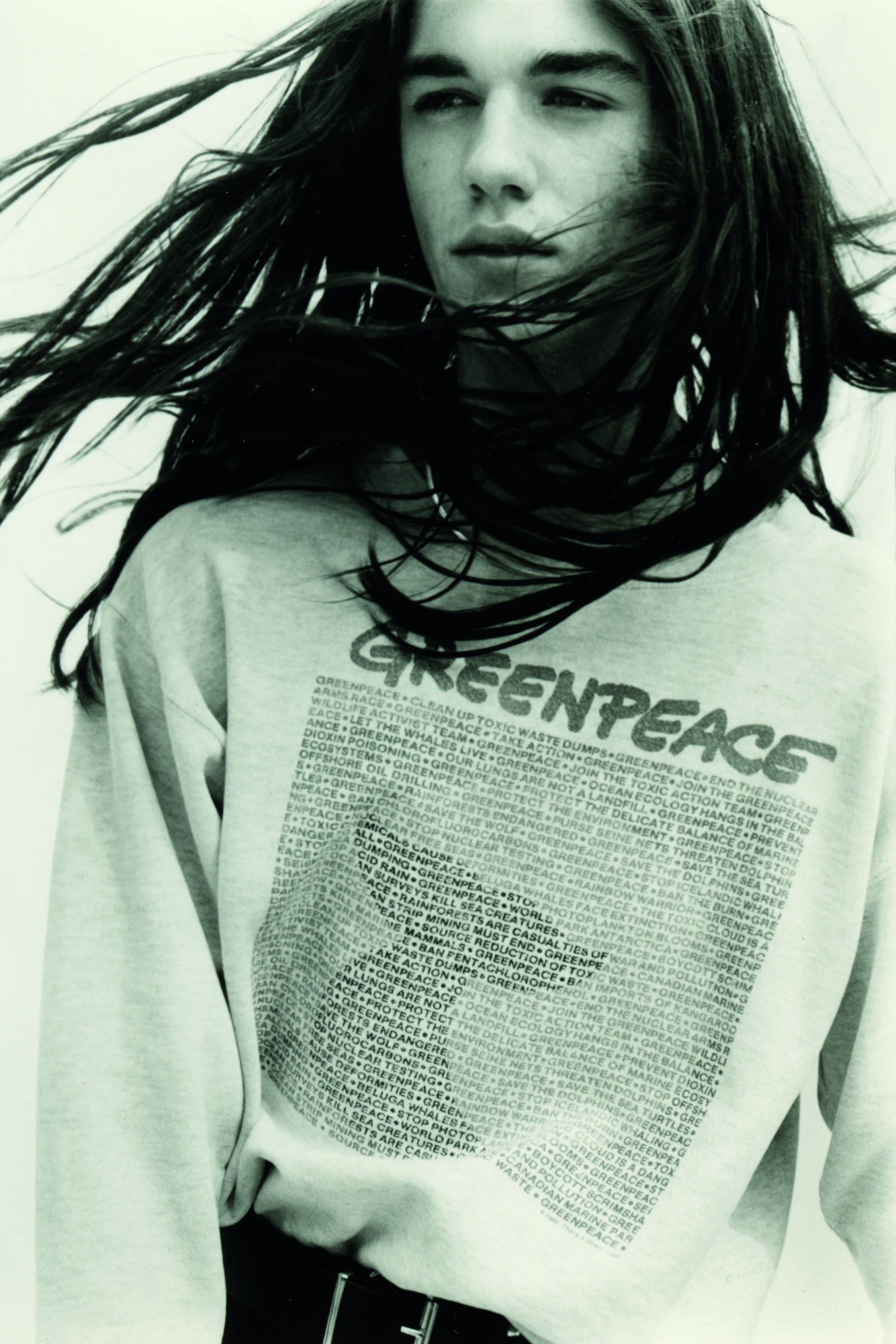
Catwalk fashion rarely does revolutionary rage well, and yet revolutionary rage does fashion well. The most primal and humble example of this is the protesting slogan T-shirt, so Fuck Boris or Save The Whales. My favourite though is Katherine Hamnett’s “58% Don’t Want Pershing” T-shirt, it still remains one of the most amusing and powerful examples of the protest tee. Partly for the context of it, with Katherine turning up at a Downing Street cocktail party to greet Margaret Thatcher wearing a T-shirt that viscerally reminded the then Prime Minister, this least-consensual of politicians, of the unpopular reality of her policies, that people generally don’t want to be destroyed by intercontinental ballistic missiles. Despite being a designer, Kartherine had quickly knocked the shirt up at home. It was more protest than fashion, the message more important than the medium. Which is why the luxury fashion industry’s attempts at mass-produced sloganeering always fall a little flat, it needs that DIY spirit. It is more interesting to see the sloganeerers appropriate the design tactics of the fashion industry.
Two of my favourite T-shirts I own fall into this category. The first is a CND T-shirt from the 80s. It features a cartoon of a black cat, a mess of fur with big startled eyes, wearing a CND peace pin. The cat is sitting above the scrawled slogan: ‘cats against the bomb’ signed with a paw print. It manages to combine so much in such a small space: it’s cutesy and twee but with an incongruous hint of the nuclear apocalypse. It has been worn so much now that it’s falling to pieces, full of holes, relegated to the status of artefact.
The second was bought in a stall in the winding backstreets of the old town of Jerusalem. The stall was beautiful. It catered to every political and religious disposition without prejudice. It stocked Catholic rosaires and Orthodox iconography and Beitar scarves and ironic pro-Israel shirts (one read “Guns ‘n’ Moses”). I picked up a T-shirt that reads “Free Palestine” in English, Arabic and Hebrew under a fluttering Palestinian flag.
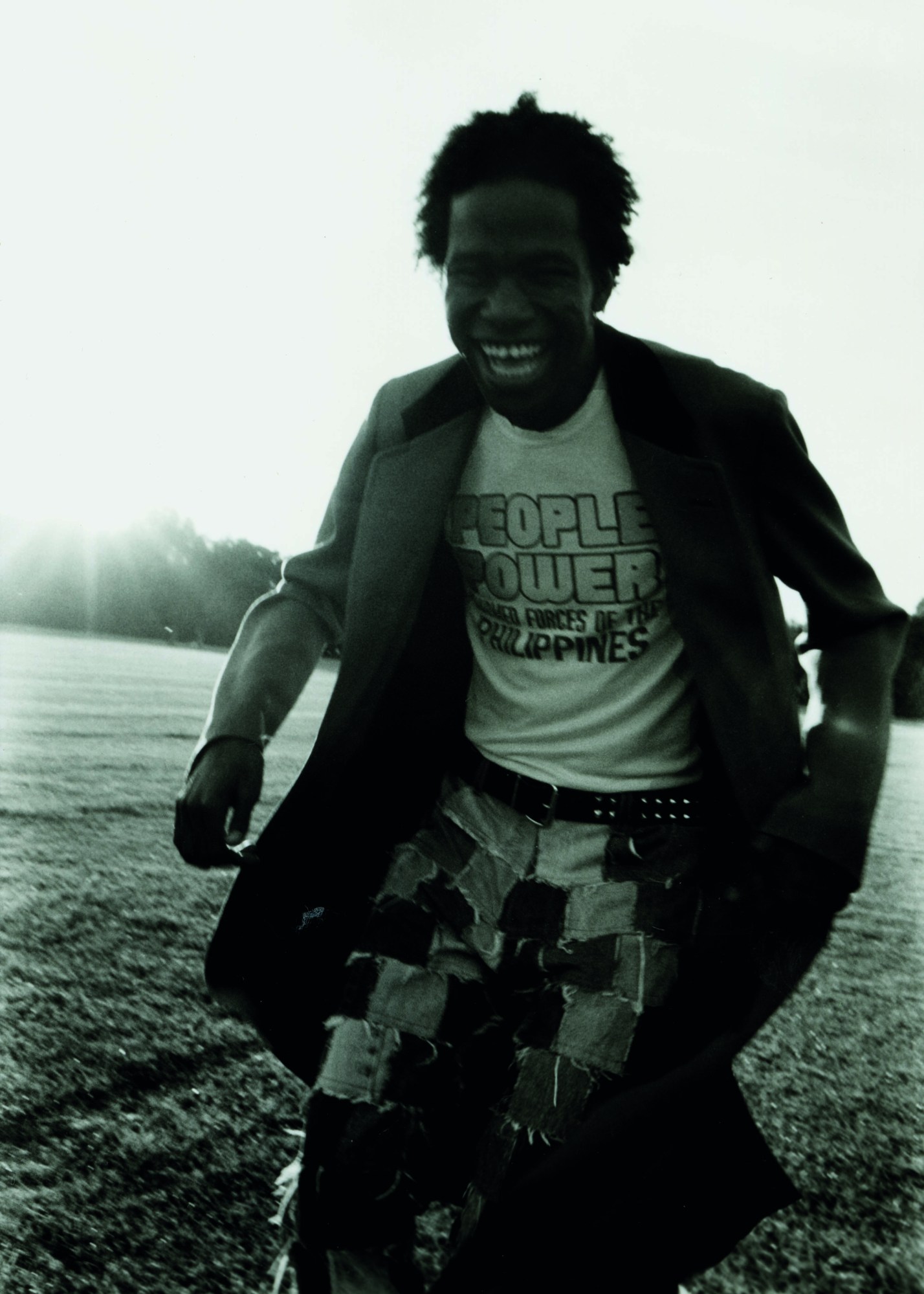
I haven’t done much to support nuclear disarmament or Palestinian independence, but I have worn those two T-shirts more than many other items of clothing I own. The protest tee is insidious, though, and that’s what makes it powerful. It is explicit and loud and presents an incontrovertible message. Racism is an illness. Earth First. People Power. The right slogan is transformative. Unarguable. It worms its way into the brain. My T-shirt could become what you believe in.
Recently, at Glastonbury, the musician Loyle Carner took to the stage wearing a T-shirt that read ‘I Hate Boris’. A PG take on a viral Fuck Boris tee, designed to get past the BBC censors and spread that message to the world. It followed on from Stormzy’s Glastonbury appearance two days earlier, where he lead the crowd in a chant of “Fuck the government and fuck Boris”. The rightwing media frothed. The protest slogan T-shirt still retains an ability to have an impact and make a point, it is just about simplifying your message.
But in a certain respect the protest tee has been subsumed by the virality of the protest billboard. Every protest march these days is followed by an obligatory listicle on BuzzFeed spotlighting the best and funniest placards. These images spread online, across Instagram. Get reblogged and reblogged. Their pithiness and wittiness and glib sarcasm (no matter the protest, no matter the place, you will find someone with a placard that reads: “it’s so bad even the introverts are here.”) function in a similar way to my duo of shirts. A desire to be seen as part of the solution, to be seen believing in the right thing. Been there, stood up for that, bought that T-shirt.
Yet for that bit of cynicism, protest fashion works how it was intended. The T-shirts spread the message. Believe what you want, you’re just a vessel for it.
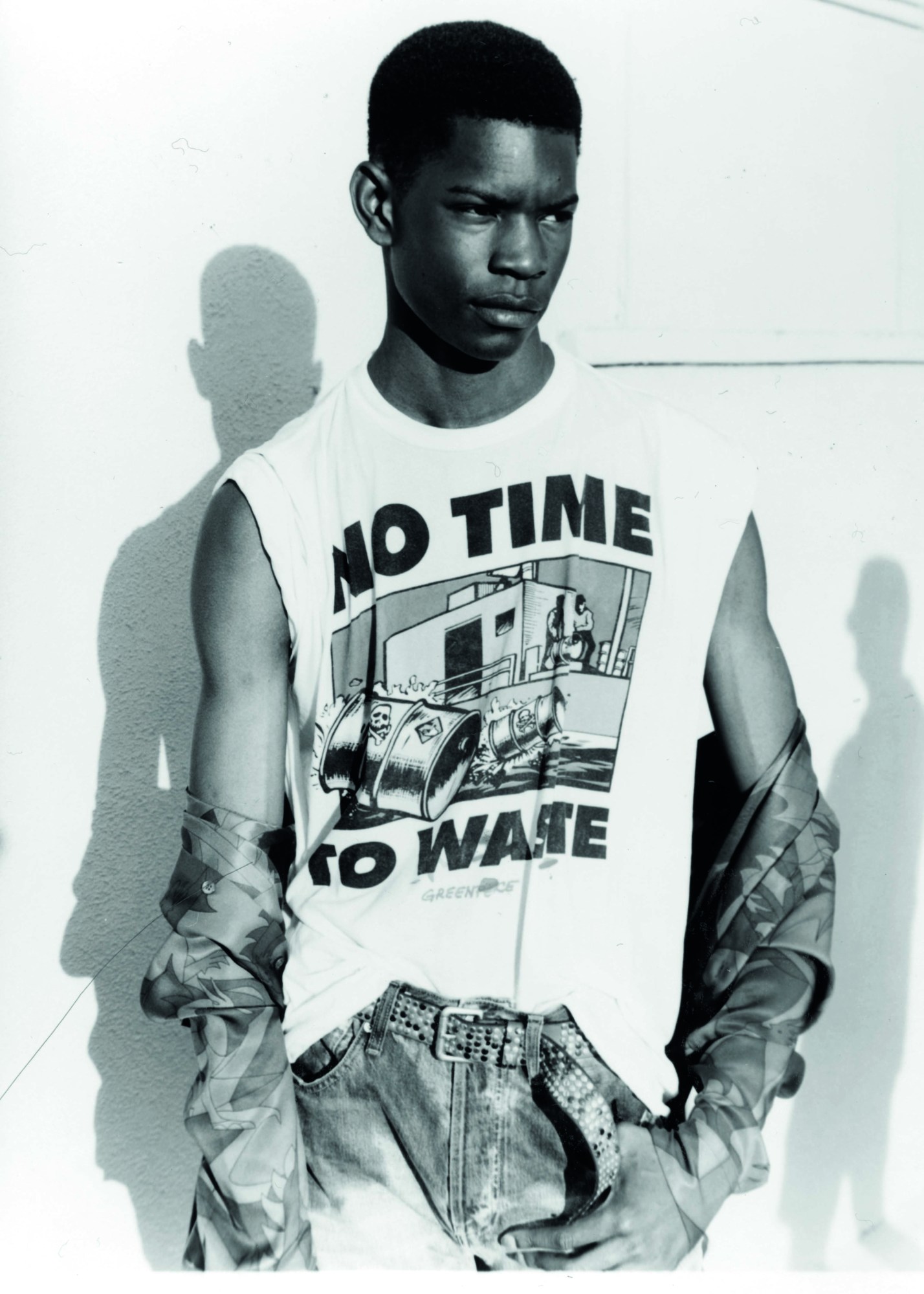
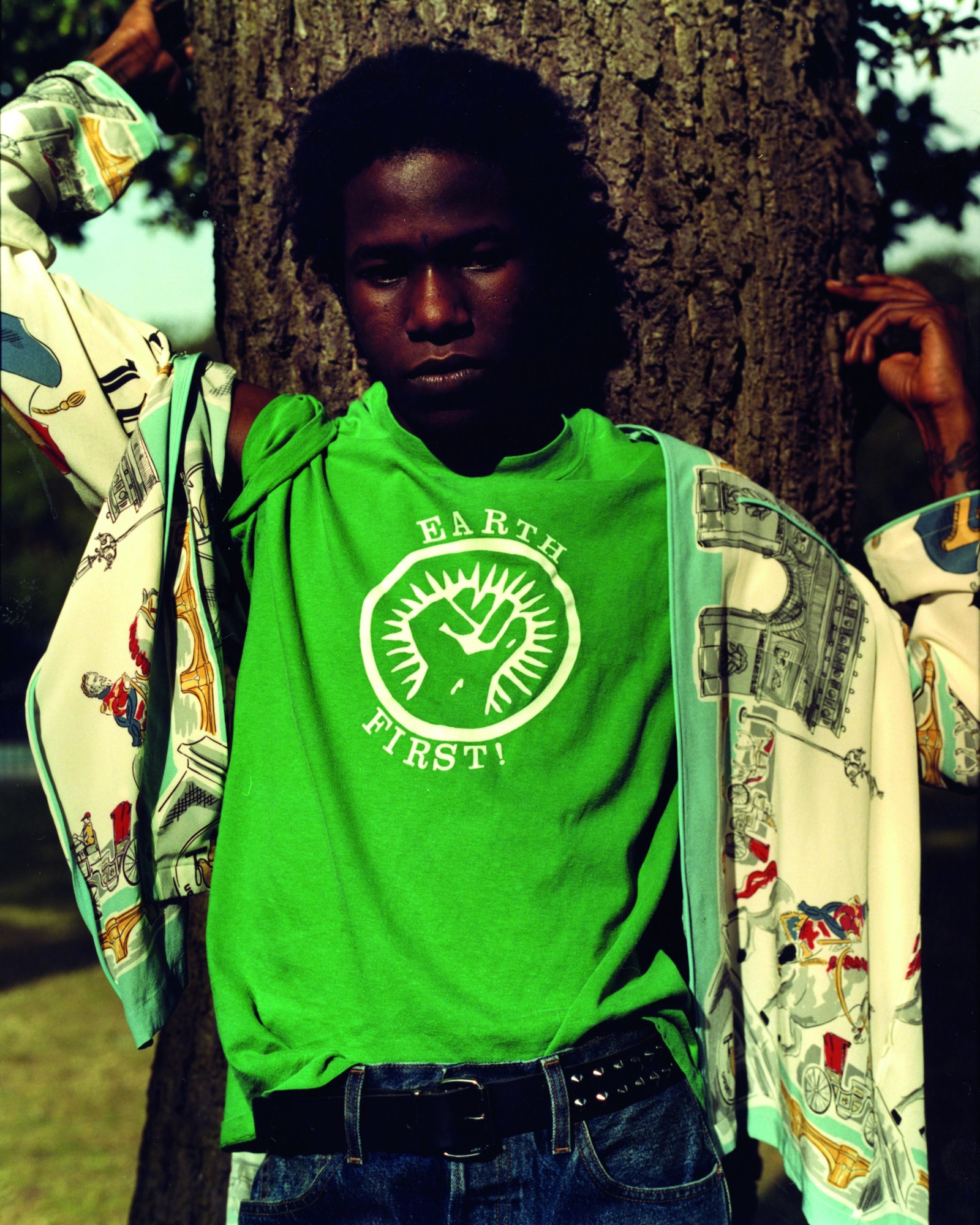
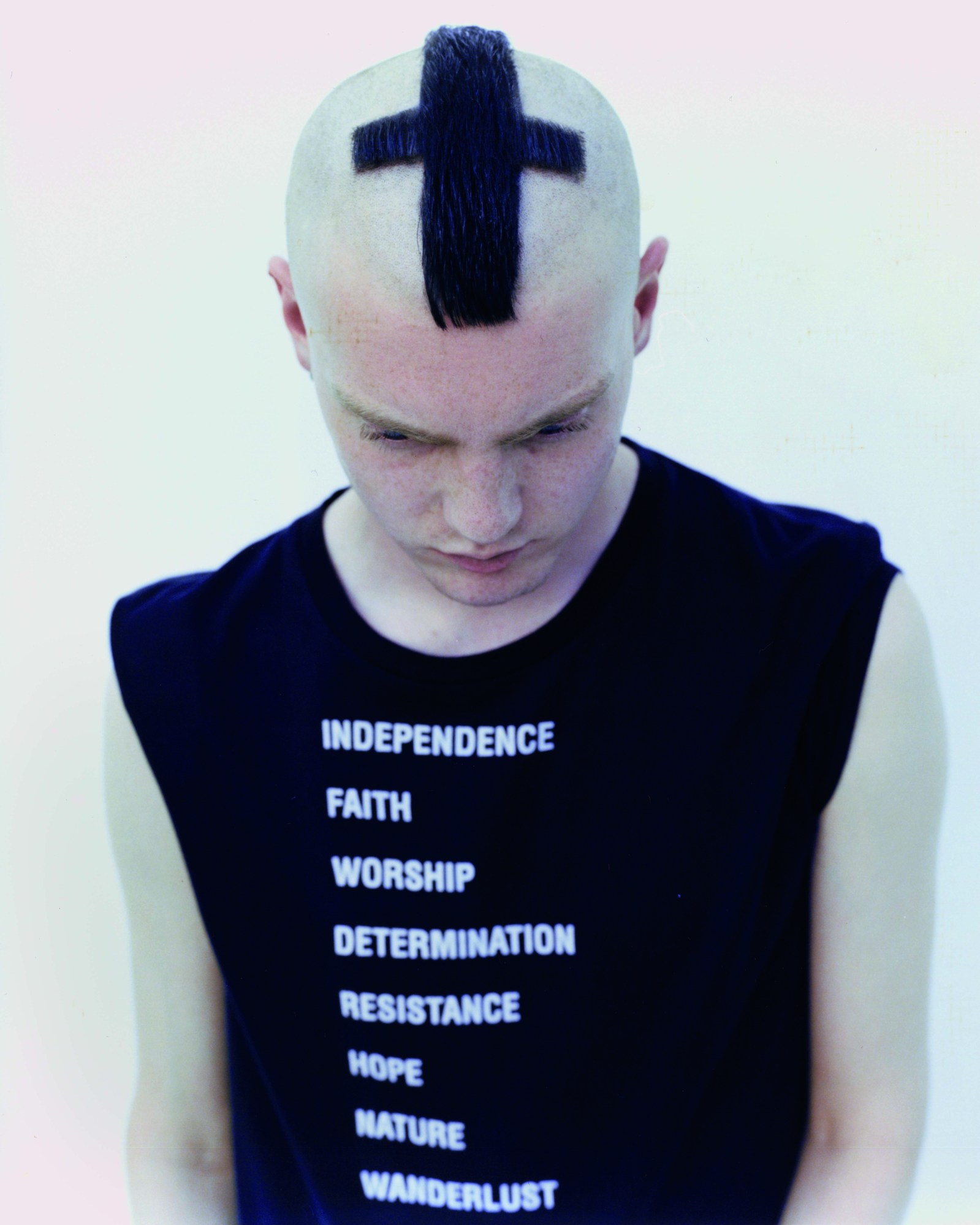
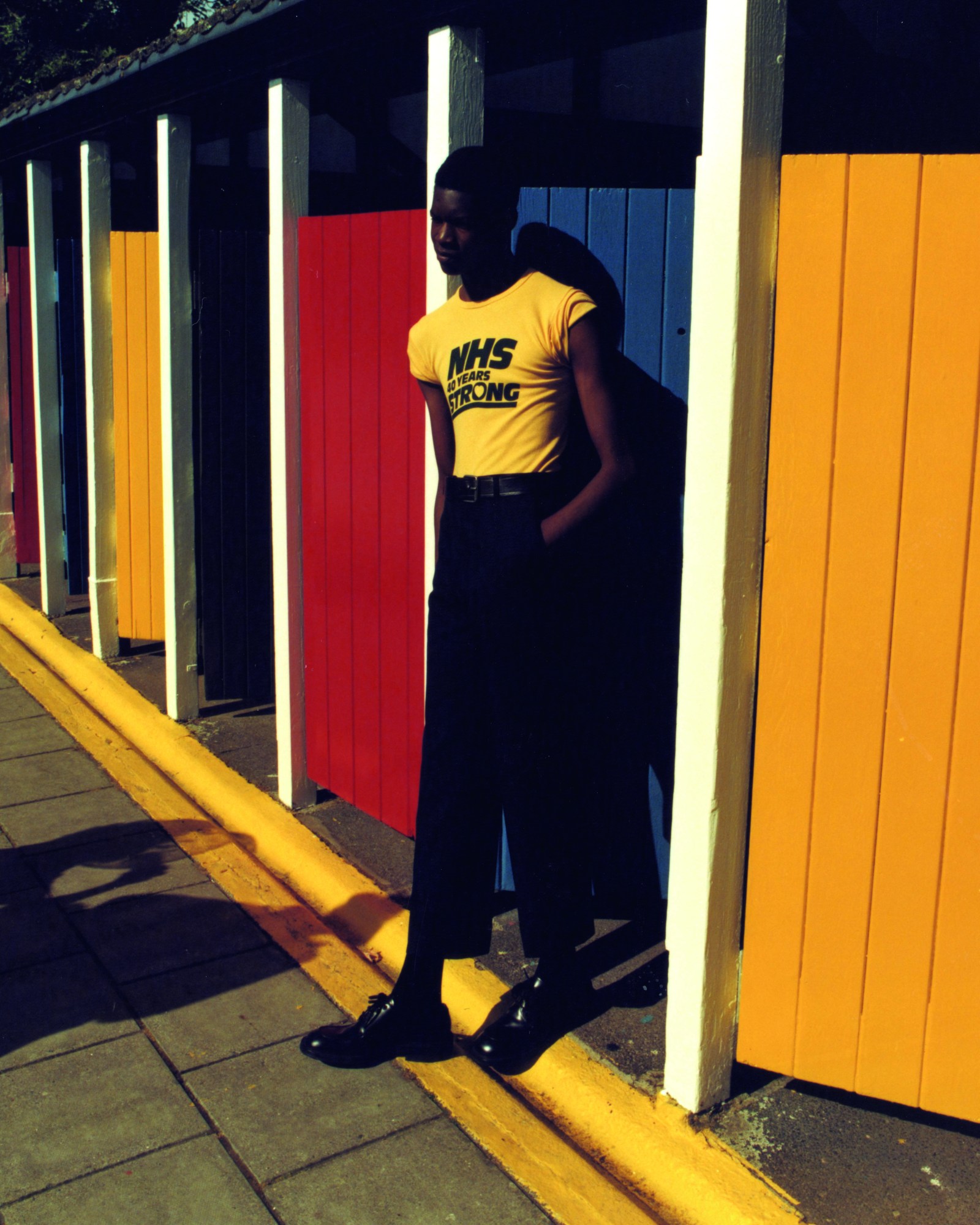
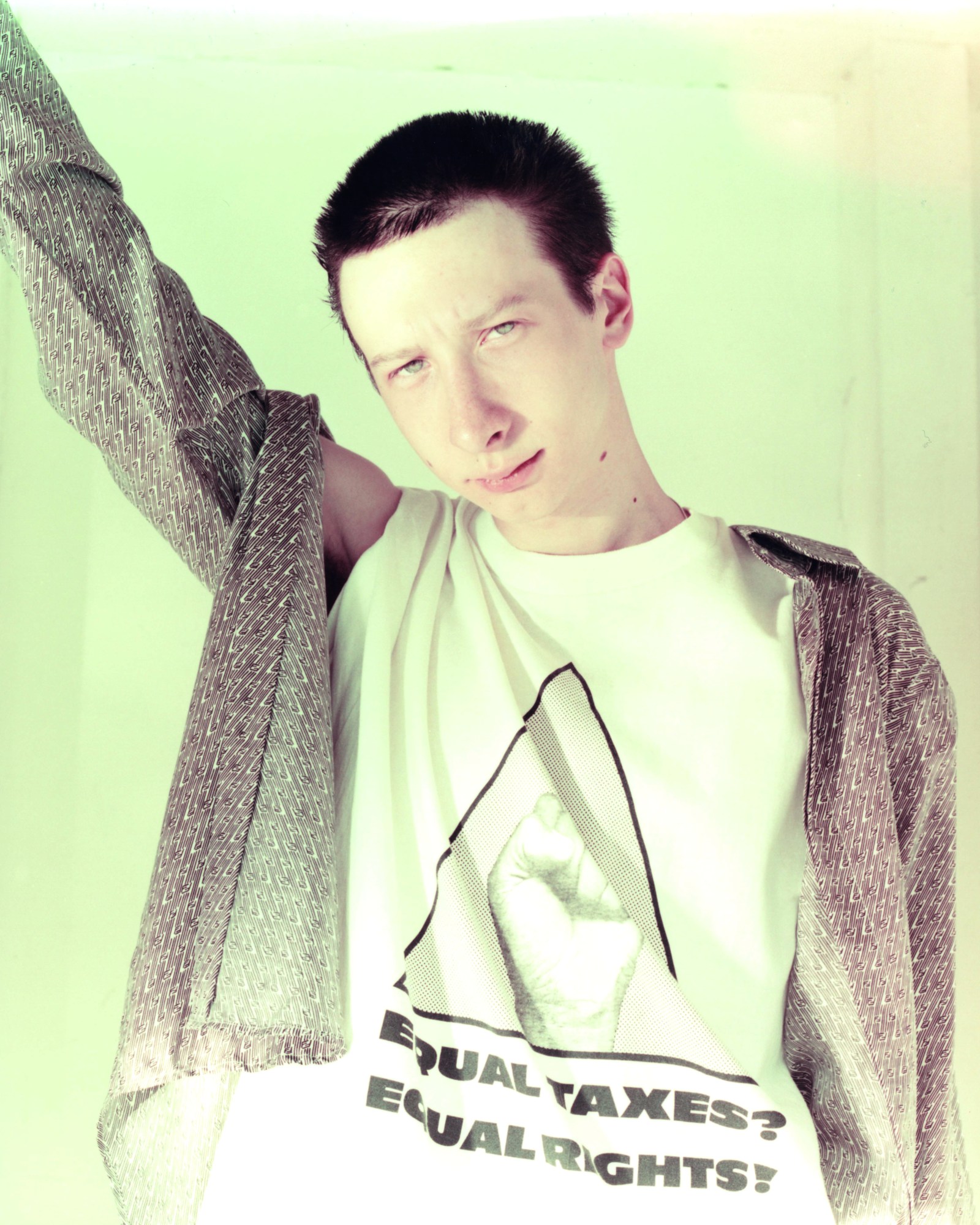
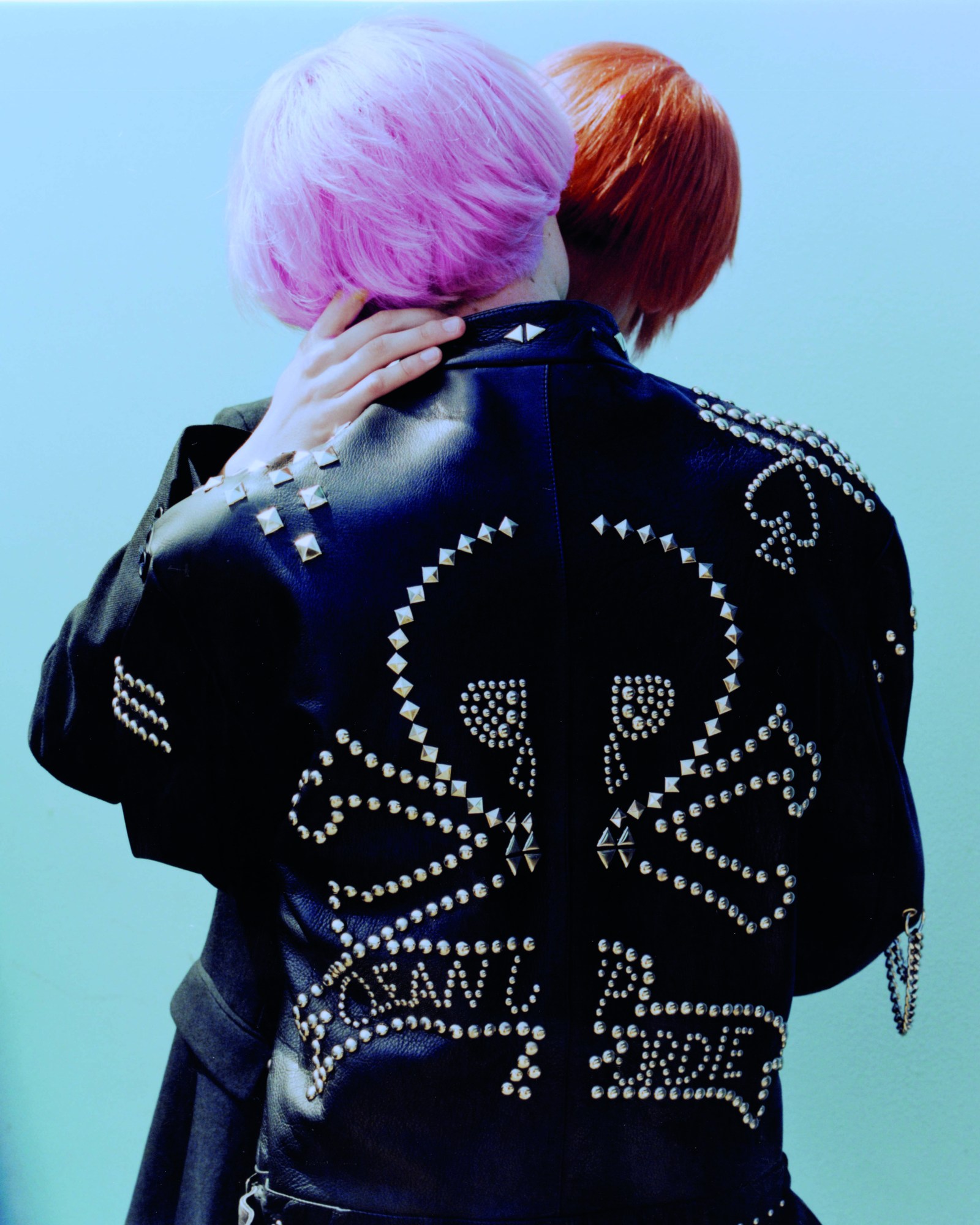
Credits
Photography Drew Vickers.
Styling Max Clark.
Hair Matt Mulhall at Streeters using Harry’s.
Set design Samuel Overs at The Magnet Agency.
Photography assistance Tomo Inenaga and Louis Headlam.
Styling assistance Giovanni Beda, Joe Palmer and Gal Klein.
Set design assistance Mitchell Fenn.
Production Louise Merat at Artistry London.
Production assistance Amy Cahruy-Hughes and George Whale.
Casting Gabrielle Lawrence at People File.
Models LA Timpa at Anti-Agency. Grace Musase at Elite. Kamil at ETWO. Jayden at IMG. Declan and Kieran at The Squad. Oscar J at Tomorrow Is Another Day and Batty.
